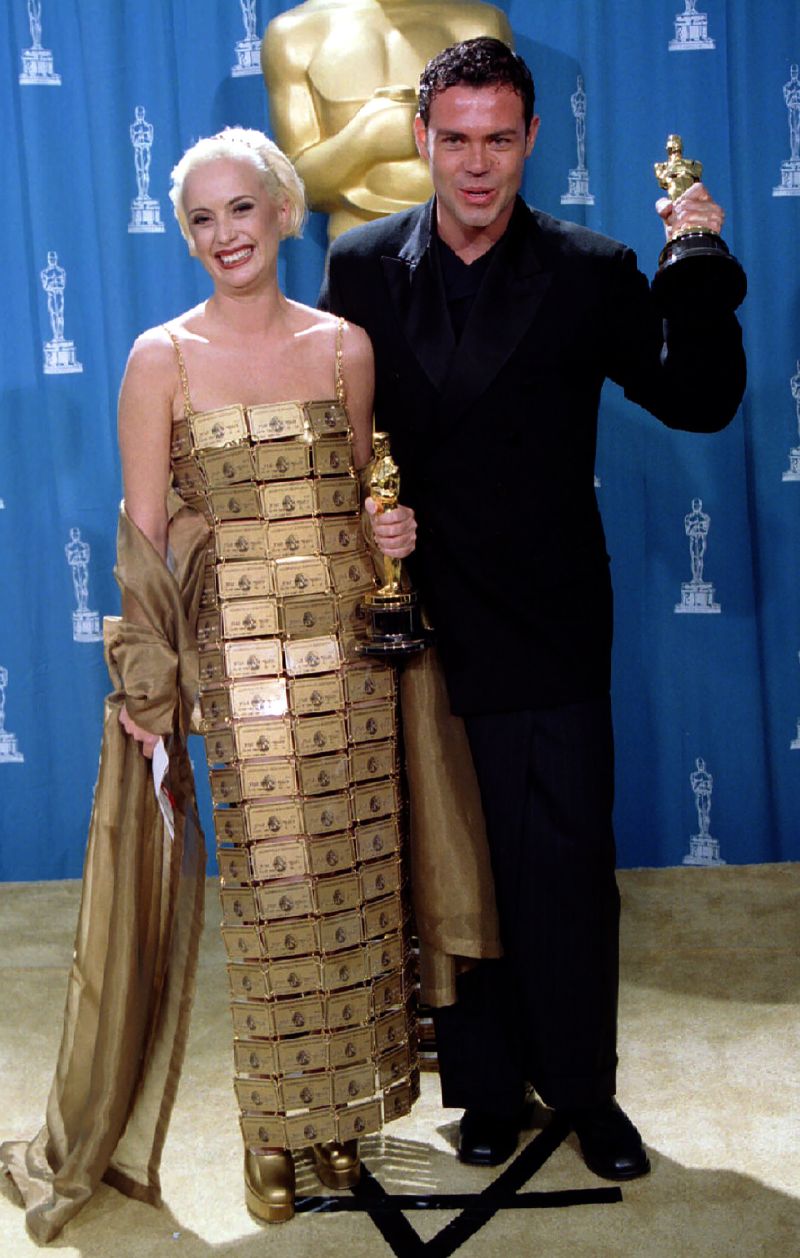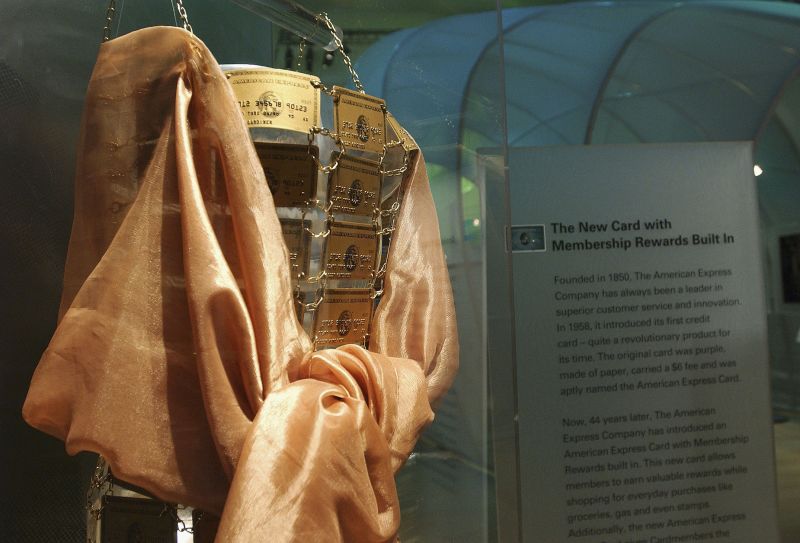
When Lizzy Gardiner Took the Oscars by Storm with a Dress Adorned in 254 Credit Cards

Lizzy Gardiner made an unforgettable statement at the Oscars in a floor-length dress adorned with 254 American Express gold cards The shimmering spaghetti strap gown, accompanied by gold underwear and matching platforms, left everyone stunned
At the 67th Academy Awards, Australian costume designer Lizzy Gardiner made waves by wearing a gown made from 254 American Express Gold cards on the red carpet. The shimmering spaghetti strap floor-length outfit, along with the gold underwear and matching platforms, became a memorable moment in Oscars fashion history. According to Time Magazine, all the cards were authentic, albeit expired, with Gardiner's name on them but missing a digit, making them invalid.
In 1995, Gardiner, a relative unknown in Hollywood at the time, was nominated for Best Costume Design for her work on "The Adventures of Priscilla, Queen of the Desert." She had initially planned for one of the film's three cross-dressing leads to wear a dress made of credit cards, but American Express and several other banks reportedly declined the opportunity to have their cards featured in the movie. (Instead, she ended up creating a dress made from flip flops).
At the 67th annual Academy Awards in Los Angeles, Australians Lizzy Gardiner and Tim Chappel proudly display their Oscars for best costume design, awarded for their work on the film "The Adventures of Priscilla: Queen of the Desert." Gardiner's gown, made entirely of American Express credit cards, adds an unexpected and memorable touch to the occasion.
"I was in a tight spot and had nothing to wear," Gardiner told red-carpet reporters about her Oscars outfit. "So I revisited some of my past successful fashion choices."
She later explained to The New York Times that she was "searching for an American symbol," and said, "Using a Coca-Cola bottle or Mickey Mouse would have been absurd, incorporating the American flag would have been disrespectful, and Cadillac hubcaps were simply too uncomfortable."
Was this one of the most poorly dressed nights in Oscars history?
As she and fellow costume designer Tim Chappel accepted their award on stage, host David Letterman quipped, "I'm telling you, American Express can't buy publicity like that."
The company had granted Gardiner permission to use their cards this time. American Express, one of the event sponsors, had sent over 300 cards for her and Salvador Perez, a designer from Los Angeles, to assemble into a gown in approximately 12 hours, she told the Times.
An exact replica of Gardiners iconic dress sold at a Christies charity auction for $12,650.
Matt Campbell/AFP via Getty Images
A statement gown
One month later, a spokesperson for American Express provided an explanation for why the company had approved Gardiner's dress for the Oscars, but not for the movie, stating: "It's different. She's not dressing a character. She's dressing herself." Shortly after, American Express announced that they had purchased the dress from Gardiner for an undisclosed price, as reported by the LA Times.
Gardiner's attire was widely seen as a satirical criticism of Hollywood's extravagance. She confirmed that it was a "sartorial protest," explaining to the Hollywood Reporter that the credit cards on the dress made a statement about wealth and status. Critics praised her bold fashion choice as more daring than the outfits of the more famous celebrities at the event. The New York Times even noted that in an evening with subdued attire, Gardiner still managed to stand out.
Dua Lipa and Megan Fox have a surprising history with red hair. While some praised their bold style choices, others were less kind. Time magazine even named one of Megan Fox's gowns as one of the worst in Oscars history, calling it "tacky" and questioning how she was even able to sit down in it.
But the gown's influence has left a lasting impact on fashion. In 2017, American label Vaquera paid tribute to Gardiner by reimagining her creation (complete with Vaquera-branded dummy credit cards) on the runway. Vogue noted at the time that the design approached "coming-of-age themes with an absurdist twist." A replica of Gardiner's iconic dress, created by the designer and American Express, made its way to the auction block at Christie's for a charity auction, where it sold for $12,650.
The dress on display at the Pacific Design Center in Los Angeles in 2004.
Amanda Edwards/Getty Images
In a 2017 interview with Australia's ABC News, Gardiner looked back on the outfit and revealed that it had "really upset a lot of people." She also acknowledged that "A lot of women, I think they felt upstaged or pissed off that I wasn't taking things as seriously as I should."
The iconic dress is now displayed in the National Gallery of Victoria in Australia, serving as a symbol of fashion history and a testament to the fact that one does not need to be a household name to make a significant impact on Hollywood's grandest stage.
As for the amount of publicity that American Express reaped from the extravaganza? Thats priceless.















